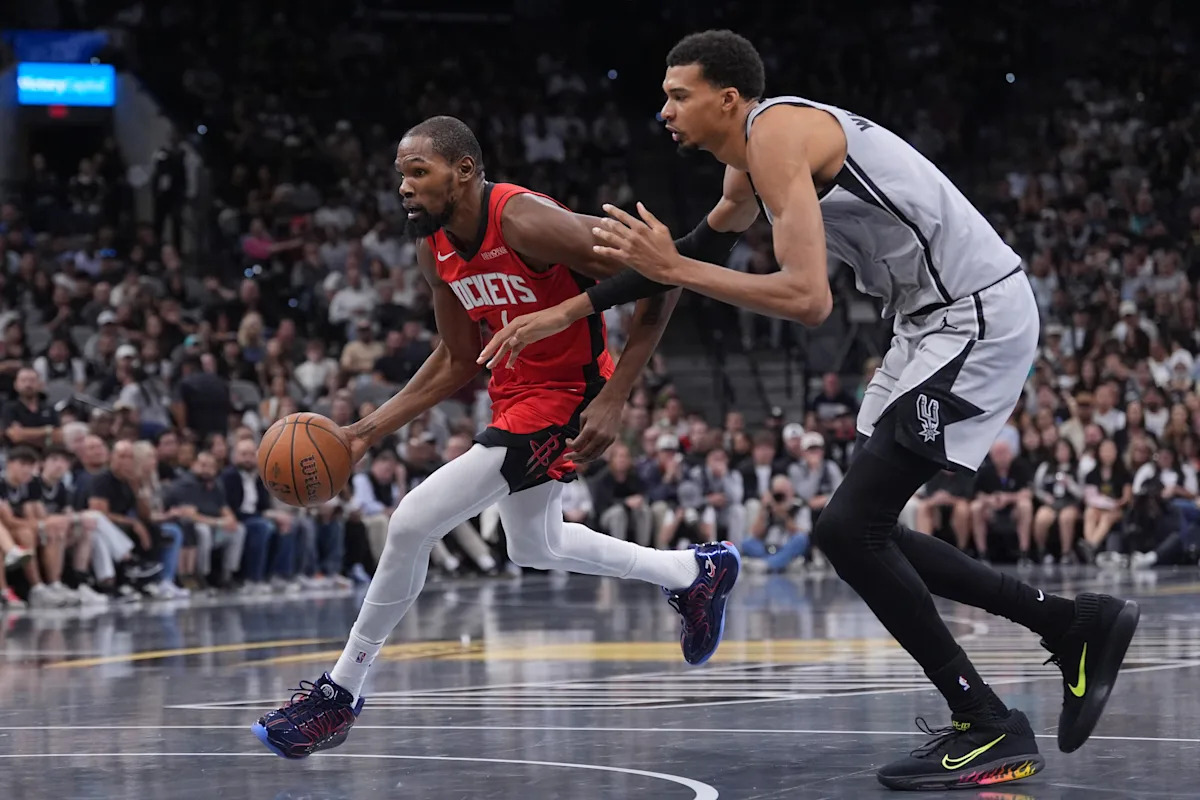Unpredictability. Sport’s unique selling point that sets it apart from every other form of entertainment. A Hollywood drama can deliver a shock twist, but it can never match the raw, unscripted chaos of sporting competition.
Leicester City winning the Premier League in 2016, the 2007 New York Giants beating the New England Patriots in Super Bowl XLII (and XLVI for good measure), 18-year-old Emma Raducanu winning the U.S. Open in 2021 as a qualifier.
Sports fans are gripped by this uncertainty. When the Premier League title and relegation race were wrapped up early in 2025, end-of-season viewing figures dropped 10 per cent compared with the previous year.
But which sport is the most unpredictable? The Athletic analysed historical bookmaker odds across six sports — tennis, basketball, American football, baseball, soccer and golf — to measure how often the favourite actually wins.
Men’s Grand Slam tennis emerges as most predictable, with favourites winning 76 per cent of the time, while the women’s game is close behind. In the NFL and NBA, it’s roughly two in three games that are won by the stronger side. Baseball is a bit of an anomaly in North American team sports, at just 58 per cent.
Soccer meanwhile, has been far trickier for the bookmakers. Since 2005, favourites have won just over half of all Premier League matches. Golf pushes unpredictability even further. On the PGA Tour, only around one in 10 favourites manage to win tournaments.
So why do some sports follow the script more than others? The answer lies in a handful of key factors. The first and most straightforward is the number of outcomes. In North American sports, the vast majority of games feature two possible outcomes, win or lose (there have been 14 tied games in the NFL to date in the 21st century); in soccer, teams are able to draw matches. This offers underdogs one more chance to avoid defeat, skewing the odds away from the favourites.
Draws are one piece of the puzzle, but so is scoring frequency. Soccer is low-scoring: since 1992, the Premier League has averaged 2.7 goals a game. With so few goals, randomness plays a larger role. Games can hinge on a single fortuitous deflection or costly mistake. In the Premier League, the team that scores first goes on to win or draw about 88 per cent of the time.

Basketball sits at the other extreme. The NBA averages around 76 baskets per game, diluting the impact of a single score. This gives stronger teams more of a chance to fight back. It’s not just the number of scores, it’s how they accumulate. MLB produces fewer runs than the NFL does touchdowns, yet delivers more upsets. In American football, a touchdown is always worth six points. Baseball is different. A home run brings one run if the bases are empty, but four if loaded. A single swing can flip the game and that volatility breeds unpredictability.
Like scoring frequency, match length often favours stronger teams. The clearest example comes from Grand Slam tennis: men play best-of-five, women best-of-three. The extended format in the men’s game gives favourites more time to recover if they are trailing.
Novak Djokovic holds a record 24 Grand Slam titles on the men’s side but, in eight of these, he required comebacks from two sets down en route to victory, the point at which he would have lost in a best-of-three sets game.

But despite the shorter format, women’s tennis is still more predictable than the other team sports analysed. As an individual sport, there are fewer moving parts. When world No 1 Aryna Sabalenka steps on court, if she plays to her level, she usually wins.
Team sports are more chaotic. In soccer, 11 players must perform in sync. A single mistake from any one of them, and the whole system can collapse.
Golfers have even greater control over their performance. A tennis player must still adapt to an opponent’s style and strategy, but a golfer’s only task is to shoot the lowest score possible.
It is the field size that makes it tough to win. Tournaments regularly have more than 100 players competing simultaneously. English golfer Danny Willett entered the 2016 Masters as a rank outsider, then delivered the performance of his life to take home the green jacket. His triumph was all the more remarkable given he trailed defending champion and heavy favourite Jordan Spieth by five shots going into the back nine on the final day.
Willett has never reproduced this level since, but in fields this large, at least one outsider is almost certain to catch fire, like he did.
That is why, before the Ryder Cup, golf looks more predictable in its team format. The Americans are favourites to triumph at the Bethpage Black Course, New York, which is in keeping with the tournament’s history. Since the competition expanded to include all of Europe in 1979, the home side has won 73 per cent of the time. Predicting a winner from a set of two teams is a simpler task.
Regular tour golf is different. We are not asking whether Rory McIlroy can beat Scottie Scheffler, but whether he can beat Scheffler and an entire field of 100-plus. It is the same reason predicting the winner of the Champions League is far harder than picking the outcome of a single knockout tie. The Ryder Cup’s 12 singles on the final day are the closest golf gets to the one-on-one contests familiar in other sports.
So, the answer to the question of what is the most unpredictable sport: golf, sort of.
(Top photos: Getty Images)
























